What’s not to love about garden hearts?
Hearts have long been a symbol of Valentine’s Day, but it doesn’t have to be February 14 for gardeners to wear their hearts on their sleeves. In Texas, as elsewhere, heart-shaped foliage, flowers, garden art, and whimsical knickknacks are prevalent in gardens year-round, greeting the first snowbells of spring right through to the last snow flurries of winter.
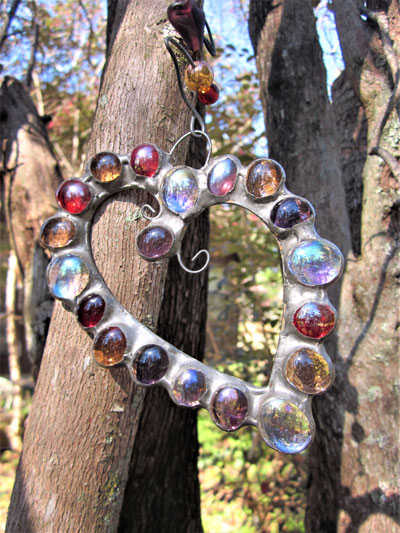
Sun catcher. This jeweled heart catches sunlight. Images by Diane Morey Sitton.
It’s hard to say when the first gardener painted a heart on a tool shed or made a heart-shaped whirligig from a scrap of rusty tin. Most likely, the moment was inspired by Valentine’s Day.
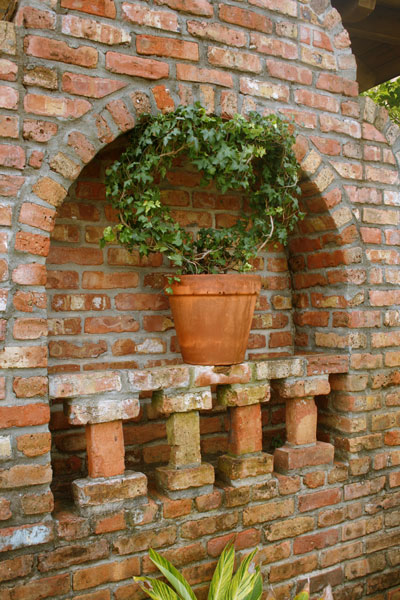
Be my valentine. When trained into a heart shape, a pot of ivy becomes a living valentine.
The roots of the heart-filled holiday stretch back to an ancient Roman love fest celebrated in mid-February. Later, the pope recast the pagan festivities into a festival honoring Saint Valentinus. In the 14th century, a poem written by English poet Geoffrey Chaucer linked Valentine’s Day to romance.
America’s love affair with the day of hearts and flowers began in the 19th century. By 1913, Hallmark Cards’ mass-produced valentines had replaced the once-coveted handcrafted cards of earlier times.
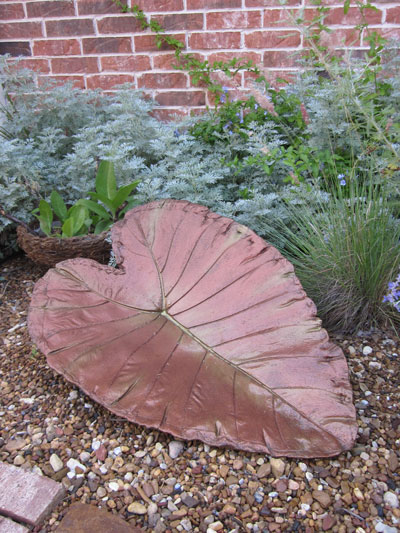
Making an impression. This iridescent focal point was handcrafted by making an imprint of a heart-shaped leaf.
Today, thanks to the glorious glut of candy, cards, and all things cupid, the heart-shaped symbol is more prevalent than ever, expressing love, romance, and friendship–and gardeners are as smitten as everyone else.
Look around. There are hearts aplenty.
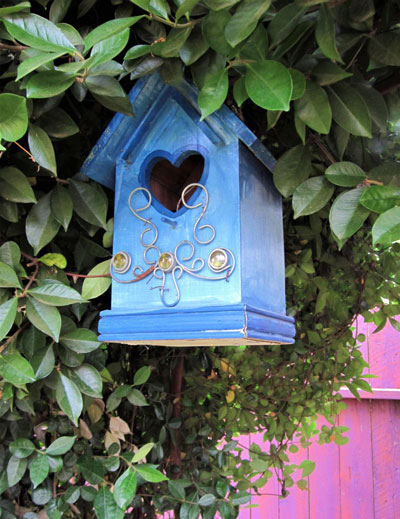
Hole heartedly. Even birdhouses have heart.
Like eager children passing out dime store valentines to classmates, gardeners hang heart-shaped wind chimes from tree limbs, they display ceramic hearts in flower beds, and they use twinkle lights to illuminate heart silhouettes made from bent barrel rings. Gardens large and small boast stepping stones, signs, birdhouses, pots, and planters, either embellished with hearts or shaped like hearts.
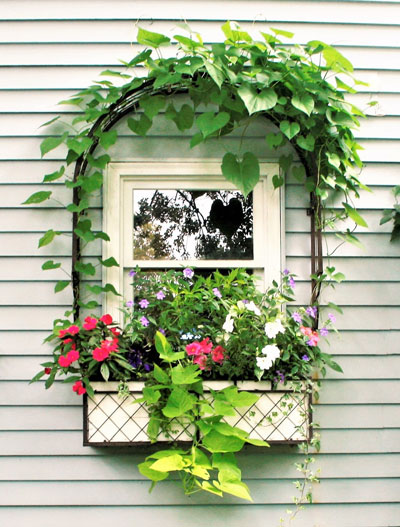
Seeing double. A vine with heart-shaped foliage casts its heart-shaped reflection on the window behind it.
Decorative metalwork, too, is all heart. Look closely. Trellises scrolled with heart-shaped patterns support vines with heart-shaped foliage. Chair backs, plant stands, plant hangers, window boxes, and gates emblazoned with heart-shaped images set the heart on fire.
And garden décor is only the prelude.
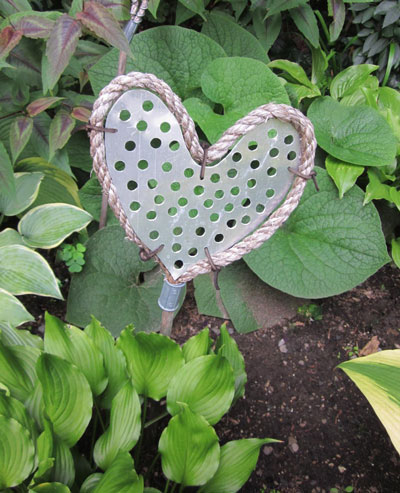
Heart and soil. A handcrafted heart sets off hosta’s heart-shaped foliage.
Plants with heart-shaped foliage and flowers turn every day into Valentine’s Day. Selections of begonia, caladium, coleus, cyclamen, elephant ear, hosta, and philodendron number among the heart throbs. Anthurium and dicentra (bleeding heart) top the list of heart-shaped flowers. Vines worthy of Saint Valentine include hoya, ivy, pothos, string of hearts, and sweet potato vine. Catalpa and redbud trees sport heart-shaped foliage, as well.
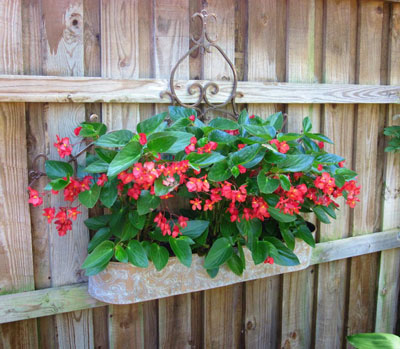
Topsy-turvy. Heart-inspired scrollwork (albeit inverted) backs this begonia-filled wall planter.
Whether primitive, prissy, as round as a cherub’s cheek, or as elongated as a lovebird’s wing, hearts embellish gates, accent sheds, highlight herb beds, and complement flowers and foliage.
Undoubtedly, for some folks, the way to one’s heart is down the garden path.
